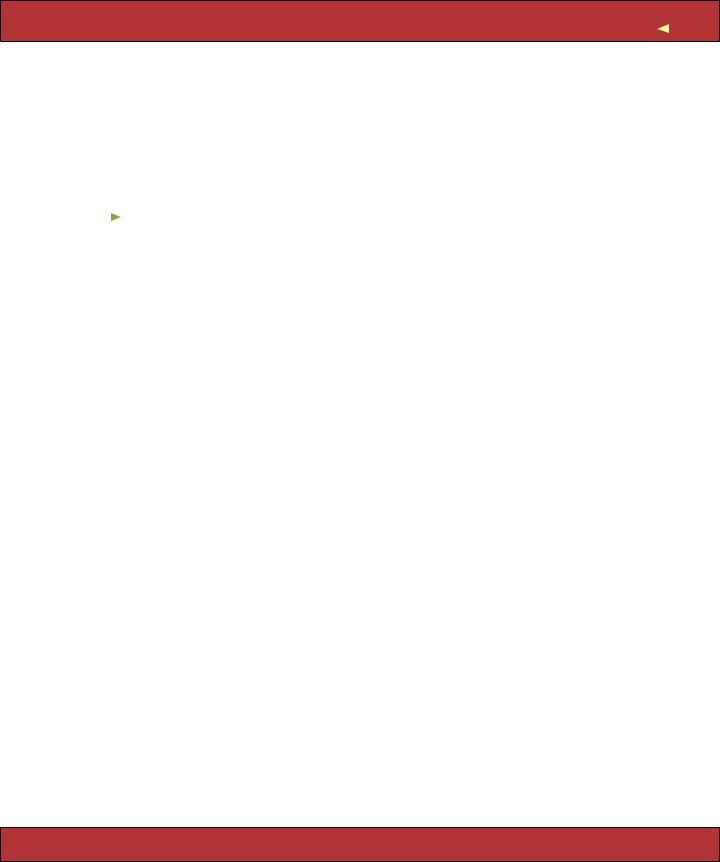
- •Contents
- •Preface to the Second Edition
- •Introduction
- •Rails Is Agile
- •Finding Your Way Around
- •Acknowledgments
- •Getting Started
- •The Architecture of Rails Applications
- •Models, Views, and Controllers
- •Active Record: Rails Model Support
- •Action Pack: The View and Controller
- •Installing Rails
- •Your Shopping List
- •Installing on Windows
- •Installing on Mac OS X
- •Installing on Linux
- •Development Environments
- •Rails and Databases
- •Rails and ISPs
- •Creating a New Application
- •Hello, Rails!
- •Linking Pages Together
- •What We Just Did
- •Building an Application
- •The Depot Application
- •Incremental Development
- •What Depot Does
- •Task A: Product Maintenance
- •Iteration A1: Get Something Running
- •Iteration A2: Add a Missing Column
- •Iteration A3: Validate!
- •Iteration A4: Prettier Listings
- •Task B: Catalog Display
- •Iteration B1: Create the Catalog Listing
- •Iteration B4: Linking to the Cart
- •Task C: Cart Creation
- •Sessions
- •Iteration C1: Creating a Cart
- •Iteration C2: A Smarter Cart
- •Iteration C3: Handling Errors
- •Iteration C4: Finishing the Cart
- •Task D: Add a Dash of AJAX
- •Iteration D1: Moving the Cart
- •Iteration D3: Highlighting Changes
- •Iteration D4: Hide an Empty Cart
- •Iteration D5: Degrading If Javascript Is Disabled
- •What We Just Did
- •Task E: Check Out!
- •Iteration E1: Capturing an Order
- •Task F: Administration
- •Iteration F1: Adding Users
- •Iteration F2: Logging In
- •Iteration F3: Limiting Access
- •Iteration F4: A Sidebar, More Administration
- •Task G: One Last Wafer-Thin Change
- •Generating the XML Feed
- •Finishing Up
- •Task T: Testing
- •Tests Baked Right In
- •Unit Testing of Models
- •Functional Testing of Controllers
- •Integration Testing of Applications
- •Performance Testing
- •Using Mock Objects
- •The Rails Framework
- •Rails in Depth
- •Directory Structure
- •Naming Conventions
- •Logging in Rails
- •Debugging Hints
- •Active Support
- •Generally Available Extensions
- •Enumerations and Arrays
- •String Extensions
- •Extensions to Numbers
- •Time and Date Extensions
- •An Extension to Ruby Symbols
- •with_options
- •Unicode Support
- •Migrations
- •Creating and Running Migrations
- •Anatomy of a Migration
- •Managing Tables
- •Data Migrations
- •Advanced Migrations
- •When Migrations Go Bad
- •Schema Manipulation Outside Migrations
- •Managing Migrations
- •Tables and Classes
- •Columns and Attributes
- •Primary Keys and IDs
- •Connecting to the Database
- •Aggregation and Structured Data
- •Miscellany
- •Creating Foreign Keys
- •Specifying Relationships in Models
- •belongs_to and has_xxx Declarations
- •Joining to Multiple Tables
- •Acts As
- •When Things Get Saved
- •Preloading Child Rows
- •Counters
- •Validation
- •Callbacks
- •Advanced Attributes
- •Transactions
- •Action Controller: Routing and URLs
- •The Basics
- •Routing Requests
- •Action Controller and Rails
- •Action Methods
- •Cookies and Sessions
- •Caching, Part One
- •The Problem with GET Requests
- •Action View
- •Templates
- •Using Helpers
- •How Forms Work
- •Forms That Wrap Model Objects
- •Custom Form Builders
- •Working with Nonmodel Fields
- •Uploading Files to Rails Applications
- •Layouts and Components
- •Caching, Part Two
- •Adding New Templating Systems
- •Prototype
- •Script.aculo.us
- •RJS Templates
- •Conclusion
- •Action Mailer
- •Web Services on Rails
- •Dispatching Modes
- •Using Alternate Dispatching
- •Method Invocation Interception
- •Testing Web Services
- •Protocol Clients
- •Secure and Deploy Your Application
- •Securing Your Rails Application
- •SQL Injection
- •Creating Records Directly from Form Parameters
- •Avoid Session Fixation Attacks
- •File Uploads
- •Use SSL to Transmit Sensitive Information
- •Knowing That It Works
- •Deployment and Production
- •Starting Early
- •How a Production Server Works
- •Repeatable Deployments with Capistrano
- •Setting Up a Deployment Environment
- •Checking Up on a Deployed Application
- •Production Application Chores
- •Moving On to Launch and Beyond
- •Appendices
- •Introduction to Ruby
- •Classes
- •Source Code
- •Resources
- •Index
- •Symbols

LAYOUTS AND COMPONENTS  505
505
22.9Layouts and Components
So far in this chapter we’ve looked at templates as isolated chunks of code and HTML. But one of the driving ideas behind Rails is honoring the DRY principle and eliminating the need for duplication. The average web site, though, has lots of duplication.
•Many pages share the same tops, tails, and sidebars.
•Multiple pages may contain the same snippets of rendered HTML (a blog site, for example, may have multiple places where an article is displayed).
•The same functionality may appear in multiple places. Many sites have a standard search component, or a polling component, that appears in most of the sites’ sidebars.
Rails has layouts, partials, and components that reduce the need for duplication in these three situations.
Layouts
Rails allows you to render pages that are nested inside other rendered pages. Typically this feature is used to put the content from an action within a standard site-wide page frame (title, footer, and sidebar). In fact, if you’ve been using the generate script to create scaffold-based applications, then you’ve been using these layouts all along.
When Rails honors a request to render a template from within a controller, it actually renders two templates. Obviously it renders the one you ask for (or the default template named after the action if you don’t explicitly render anything). But Rails also tries to find and render a layout template (we’ll talk about how it finds the layout in a second). If it finds the layout, it inserts the action-specific output into the HTML produced by the layout.
Let’s look at a layout template.
<html>
<head>
<title>Form: <%= controller.action_name %></title> <%= stylesheet_link_tag 'scaffold' %>
</head>
<body>
<%= yield :layout %>
</body>
</html>
The layout sets out a standard HTML page, with the head and body sections. It uses the current action name as the page title and includes a CSS file. In the body, there’s a call to yield. This is where the magic takes place. When
Report erratum

LAYOUTS AND COMPONENTS  506
506
the template for the action was rendered, Rails stored its content, labeling it :layout. Inside the layout template, calling yield retrieves this text.10,11 If the my_action.rhtml template contained
<h1><%= @msg %></h1>
the browser would see the following HTML.
<html>
<head>
<title>Form: my_action</title>
<link href="/stylesheets/scaffold.css" media="screen" rel="Stylesheet" type="text/css" />
</head>
<body>
<h1>Hello, World!</h1>
</body>
</html>
Locating Layout Files
As you’ve probably come to expect, Rails does a good job of providing defaults for layout file locations, but you can override the defaults if you need something different.
Layouts are controller-specific. If the current request is being handled by a controller called store, Rails will by default look for a layout called store (with the usual .rhtml or .rxml extension) in the app/views/layouts directory. If you create a layout called application in the layouts directory, it will be applied to all controllers that don’t otherwise have a layout defined for them.
You can override this using the layout declaration inside a controller. At its simplest, the declaration takes the name of a layout as a string. The following declaration will make the template in the file standard.rhtml or standard.rxml the layout for all actions in the store controller. The layout file will be looked for in the app/views/layouts directory.
class StoreController < ApplicationController
layout "standard"
# ...
end
You can qualify which actions will have the layout applied to them using the :only and :except qualifiers.
10.In fact, :layout is the default content returned when rendering, so you can write yield instead of yield :layout. I personally prefer the slightly more explicit version.
11.You can write <%= @content_for_layout %> in place for yield :layout.
Report erratum

LAYOUTS AND COMPONENTS  507
507
class StoreController < ApplicationController
layout "standard", :except => [ :rss, :atom ]
# ...
end
Specifying a layout of nil turns off layouts for a controller.
There are times when you need to change the appearance of a set of pages at runtime. For example, a blogging site might offer a different-looking side menu if the user is logged in, or a store site might have different-looking pages if the site is down for maintenance. Rails supports this need with dynamic layouts. If the parameter to the layout declaration is a symbol, it’s taken to be the name of a controller instance method that returns the name of the layout to be used.
class StoreController < ApplicationController
layout :determine_layout
# ...
private
def determine_layout if Store.is_closed?
"store_down" else
"standard" end
end end
Subclasses of a controller will use the parent’s layout unless they override it using the layout directive.
Finally, individual actions can choose to render using a specific layout (or with no layout at all) by passing render the :layout option.
def rss |
|
|
render(:layout |
=> false) |
# never use a layout |
end |
|
|
def checkout |
|
|
render(:layout |
=> "layouts/simple") |
|
end |
|
|
Passing Data to Layouts
Layouts have access to all the same data that’s available to conventional templates. In addition, any instance variables set in the normal template will be available in the layout (because the regular template is rendered before the
Report erratum

LAYOUTS AND COMPONENTS  508
508
layout is invoked). This might be used to parameterize headings or menus in the layout. For example, the layout might contain
<html>
<head>
<title><%= @title %></title>
<%= stylesheet_link_tag 'scaffold' %>
</head>
<body>
<h1><%= @title %></h1>
<%= @content_for_layout %>
</body>
</html>
An individual template could set the title by assigning to the @title variable.
<% @title = "My Wonderful Life" %>
<p>
Dear Diary:
</p>
<p>
Yesterday I had pizza for dinner. It was nice.
</p>
In fact, you can take this further. The same mechanism that lets you use yield :layout to embed the rendering of a template into the layout also allows to generate arbitrary content in a template, which can then be embedded into any template.
For example, different templates may need to add their own template-specific items to the standard page sidebar. We’ll use the content_for mechanism in those template to define content and then use yield in the layout to embed this content into the sidebar.
In each regular template, use a content_for to give a name to the content rendered inside a block. This content will be stored inside Rails and will not contribute to the output generated by the template.
<h1>Regular Template</h1>
<% content_for(:sidebar) do %>
<ul>
<li>this text will be rendered</li> <li>and saved for later</li>
<li>it may contain <%= "dynamic" %> stuff</li> </ul>
<% end %>
<p>
Here's the regular stuff that will appear on the page rendered by this template.
</p>
Report erratum

LAYOUTS AND COMPONENTS |
509 |
Then, in the layout, you use yield :sidebar to include this block into the page’s sidebar.
<!DOCTYPE .... >
<html>
<body>
<div class="sidebar" >
<p>
Regular sidebar stuff
</p>
<div class="page-specific-sidebar"> <%= yield :sidebar %>
</div>
</div>
</body>
</html>
This same technique can be used to add page-specific JavaScript functions into the <head> section of a layout, create specialized menu bars, and so on.
Partial Page Templates
Web applications commonly display information about the same application object or objects on multiple pages. A shopping cart might display an order line item on the shopping cart page and again on the order summary page. A blog application might display the contents of an article on the main index page and again at the top of a page soliciting comments. Typically this would involve copying snippets of code between the different template pages.
Rails, however, eliminates this duplication with the partial page templates (more frequently called partials). You can think of a partial as a kind of subroutine: you invoke it one or more times from within another template, potentially passing it objects to render as parameters. When the partial template finishes rendering, it returns control to the calling template.
Internally, a partial template looks like any other template. Externally, there’s a slight difference. The name of the file containing the template code must start with an underscore character, differentiating the source of partial templates from their more complete brothers and sisters.
For example, the partial to render a blog entry might be stored in the file
_article.rhtml in the normal views directory app/views/blog.
<div class="article" >
<div class="articleheader">
<h3><%= article.title %></h3> </div>
<div class="articlebody"> <%= h(article.body) %>
</div>
</div>
Report erratum

LAYOUTS AND COMPONENTS  510
510
Other templates use the render(:partial=>) method to invoke this.
<%= render(:partial => "article", :object => @an_article) %> <h3>Add Comment</h3>
. . .
The :partial parameter to render is the name of the template to render (but without the leading underscore). This name must be both a valid filename and a valid Ruby identifier (so a-b and 20042501 are not valid names for partials). The :object parameter identifies an object to be passed into the partial. This object will be available within the template via a local variable with the same name as the template. In this example, the @an_article object will be passed to the template, and the template can access it using the local variable article. That’s why we could write things such as article.title in the partial.
Idiomatic Rails developers use a variable named after the template (article in this instance). In fact, it’s normal to take this a step further. If the object to be passed to the partial is in a controller instance variable with the same name as the partial, you can omit the :object parameter. If, in the previous example, our controller had set up the article in the instance variable @article, the view could have rendered the partial using just
<%= render(:partial => "article") %> <h3>Add Comment</h3>
. . .
You can set additional local variables in the template by passing render a :locals parameter. This takes a hash where the entries represent the names and values of the local variables to set.
render(:partial => 'article', :object => @an_article,
:locals => { :authorized_by => session[:user_name],
:from_ip |
=> @request.remote_ip }) |
Partials and Collections
Applications commonly need to display collections of formatted entries. A blog might show a series of articles, each with text, author, date, and so on. A store might display entries in a catalog, where each has an image, a description, and a price.
The :collection parameter to render can be used in conjunction with the :partial parameter. The :partial parameter lets us use a partial to define the format of an individual entry, and the :collection parameter applies this template to each member of the collection. To display a list of article model objects using our previously defined _article.rhtml partial, we could write
<%= render(:partial => "article", :collection => @article_list) %>
Report erratum

LAYOUTS AND COMPONENTS  511
511
Inside the partial, the local variable article will be set to the current article from the collection—the variable is named after the template. In addition, the variable article_counter will be set to the index of the current article in the collection.
The optional :spacer_template parameter lets you specify a template that will be rendered between each of the elements in the collection. For example, a view might contain
Download e1/views/app/views/partial/list.rhtml
<%= render(:partial |
=> "animal", |
|
:collection |
=> |
%w{ ant bee cat dog elk }, |
:spacer_template => |
"spacer") |
|
%> |
|
|
This uses _animal.rhtml to render each animal in the given list, rendering the partial _spacer.rhtml between each. If _animal.rhtml contains
Download e1/views/app/views/partial/_animal.rhtml
<p>The animal is <%= animal %></p>
and _spacer.rhtml contains
Download e1/views/app/views/partial/_spacer.rhtml
<hr />
your users would see a list of animal names with a line between each.
Shared Partial Page Templates
If the :partial parameter to a render call is a simple name, Rails assumes that the target template is in the current controller’s view directory. However, if the name contains one or more / characters, Rails assumes that the part up to the last slash is a directory name and the rest is the template name. The directory is assumed to be under app/views. This makes it easy to share partials across controllers.
The convention among Rails applications is to store these shared partials in a subdirectory of app/views called shared. These can be rendered using something such as
<%= render(:partial => "shared/post", :object => @article) %>
. . .
In this previous example, the @article object will be assigned to the local variable post within the template.
Partials and Controllers
It isn’t just view templates that use partials. Controllers also get in on the act. Partials give controllers the ability to generate fragments from a page using the
Report erratum

LAYOUTS AND COMPONENTS  512
512
same partial template as the view itself. This is particularly important when you use AJAX support to update just part of a page from the controller—use partials, and you know your formatting for the table row or line item that you’re updating will be compatible with that used to generate its brethren initially. We talk about the use of partials with AJAX in Chapter 23, The Web, V2.0, on page 521.
Components
Although partials let you package up rendering chores into self-contained chunks, they do not give you a way of including significant business logic. After all, a partial is a view construct, and views are not supposed to contain business code.
When Rails was initially released, it came with a system for creating components. These were a packaging of both controller logic and rendering—a view could call the helper render_component, and a controller action would be called to render some fragment to be inserted into that view. Effectively, Rails could recursively invoke itself.
Unfortunately, the implementation of components left a lot to be desired: performance was poor, and there were unanticipated side effects. As a result, components are being phased out.
Instead, the common wisdom now is to synthesize component-like functionality using a combination of before filters and partials. Use the before filter to set up the context for the partial, and then render the fragment you want using a regular render :partial call. This is exactly the approach we took in the Depot application. We had a before filter find the cart object, and then we called render :partial=>... in the layout to display that cart.
The Case against Components
Components in Rails serve as a shining example of what happens when eagerness overtakes prudence. It’s the first (and we hope, last) example of a major feature that wasn’t extracted from real use but invented on behalf of others. It’s the result of overenthusiasm.
But why are those components so heinous? Besides being relatively slow, they create an illusion of separation and often work against building a strong domain model.
Take the example of a shopping cart on an e-commerce site. This sounds like the perfect example for a component. It’s supposedly self-contained, right? Well, not really. The notion of a shopping cart is part of the founding context of a shop. It’s not just about display (the view); it’s just as much about the actions (the controller).
Report erratum
